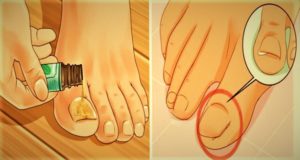Ingrown toenails can cause great pain, and the constant use of the toes during the day worsen the condition.
Namely, an ingrown toenail, or onychocryptosis, is a common toenail issue which can occur at any age. This painful condition can get infected if you do not take proper care. However, some studies suggest that there is a slightly increased male-to-female ratio, especially in the 14–25 age group.
This issue may be a result of various reasons, including trauma, improper nail cutting technique, anatomical factors such as thickening of the nail plate, a pincer-shaped toenail, a subungual exostosis tight-fitting footwear, pressure from abutting digits due to a hallux valgusor, lesser toe deformities, the presence or the use of isotretinoin in the treatment of severe acne.
The classification of ingrown toenails divides them into three groups: mild (stage 1), moderate (stage 2) and severe (stage 3). In the first group, the patient may experience nail-fold swelling, pain with pressure, erythema, and edema.
Moderate cases are manifested with drainage, increased swelling, infection, and ulceration of the nail fold. Yet, in the most complicated cases, the patient may experience a chronic inflammation, granulation, and marked nail-fold hypertrophy.
Yet, in all cases, it leads to redness, pain, swelling, and even infection, and is usually on the big toe. In almost all cases, it causes excruciate pain and may be easily infected if not treated on time.
This issue can be treated at home, but if it causes unbearable and continued pain, you should visit your doctor in order to find he easiest and fastest way to treat it and prevent further complications.

